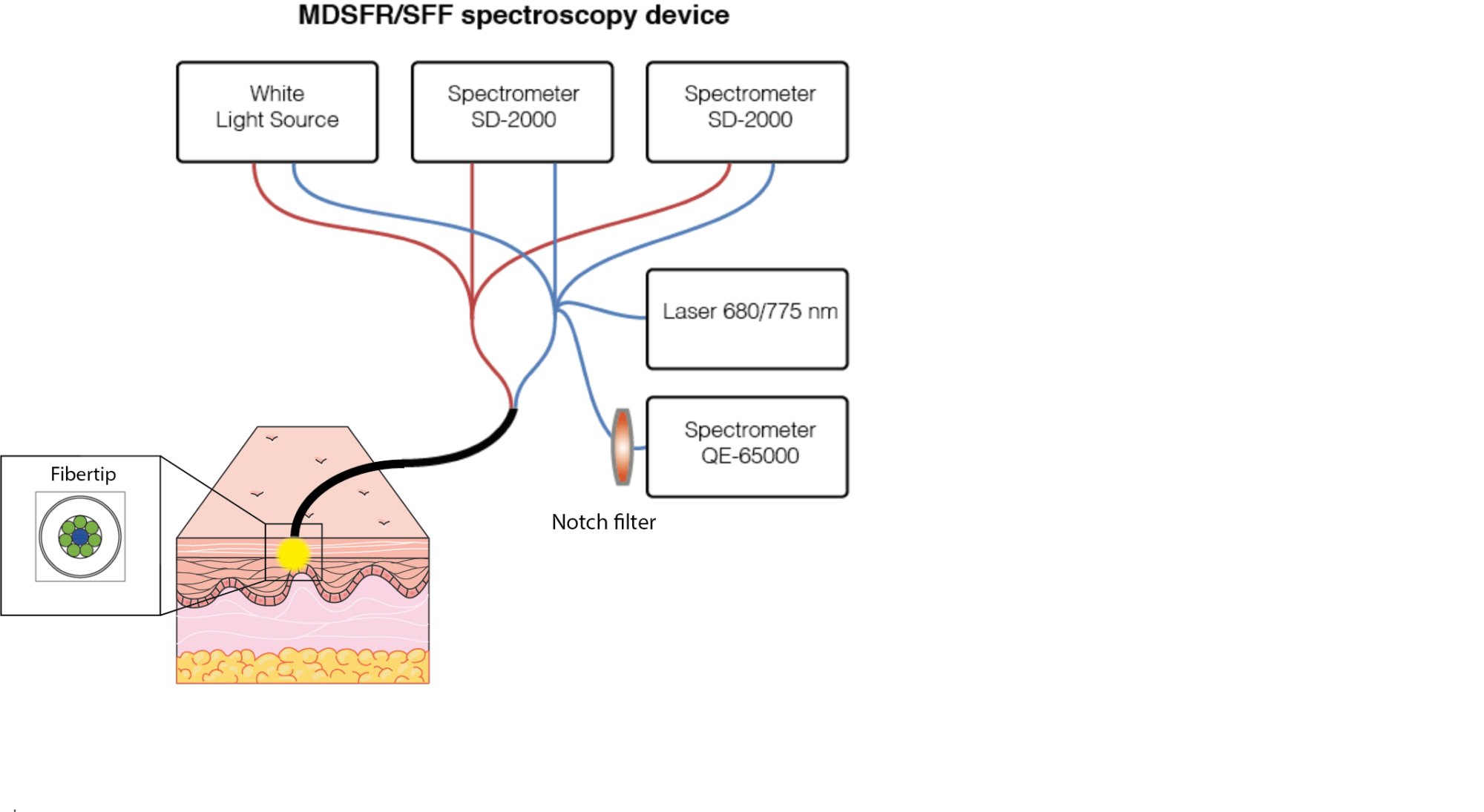Spectroscopy (MDSFR/SFF)
(Multi Diameter) Single Fiber Reflectance / Single Fiber Fluorescence or MDSFR/SFF is a non-invasive technique developed by the Erasmus Medical Center Rotterdam, which enables the determination of tissue optical properties and acquisition of the intrinsic fluorescence signal.
An MDSFR measurement consists of several co-localized single fiber reflectance (SFR) measurements of a turbid media using two or more probe diameters followed by a fluorescence measurement. By acquiring SFR spectra with multiple probe diameters, an estimation of the optical properties can be made. Ultimately, the absorption, reduced scattering coefficient, and phase function can be used to correct the fluorescence signal, resulting in the intrinsic fluorescence.
MDSFR allows for objective comparison within and between patients during clinical studies. It is often used to determine the optimal dose in dose-finding studies. The combination of spectroscopy and fluorescence molecular endoscopy is referred to as quantitative fluorescence molecular endoscopy (QFME).

USNB reflectance spectroscopy
FNA reflectance spectroscopy allows for measurements inside lymph nodes and within tissue layers. This technique uses a thin single diameter probe which can be guided through a hollow FNA needle. This can allow for the differentiation of different tissue types based on their background optical properties.